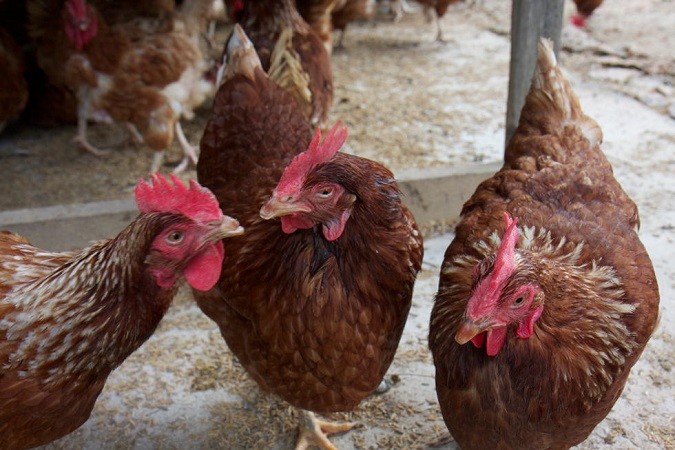

Sight
Chick embryos respond to light as early as 17 days after the start of incubation. A hen cannot rotate its eye very much but they can see a field of 300°, with a binocular field of 26°. Hens follow moving objects by moving their heads. Their acuity (sharpness) is good and they have good distance vision.
Hens characteristically lift their heads before jumping, and tests have shown that they can discriminate between squares, triangles and red and black dots. Studies showed newly hatched chicks preferred to peck at blue objects rather than green or orange ones, although orange was preferred before green but not before red. Chicks were found to differentiate between red-dyed liquid and blood. Blood was very averse to them. Chicks learn quickly to avoid coloured feed if it makes them ill, and prefer to peck at round rather than flat objects.
Smell
Not much is known about how important smell is to poultry. Hens are not keen on food that smells of mold or is sour, so presumably smell is involved in this feed rejection. It’s suggested that birds can definitely smell blood.
Hearing
Hens don’t have an ear lobe but they have a well-developed ear. Calls produced by hens range from 250 cpm (the broody hen “cluck”) to about 3000 cpm (the distress call). Studies confirmed hens can hear sounds as high as 8000 cpm. Research found that hearing in hens covered a range from 60-11950Hz with highest sensitivity from 815-2000 Hz which is their normal hearing range.
Taste
Hens have about 340 taste buds mainly on the palate and floor of the oral cavity. They are rather indifferent to sugars but can detect glucose to about 2.5% in solution. They tolerate a range of acid and alkaline tastes, and are sensitive to and avoid salty feeds. Taste determines whether a hen accepts or rejects a feed and similarly to water. Hens can detect water temperature differences of 2.8°C. They will reject water that rises 5.5°C above their body temperature although they will readily drink freezing water.
Touch
Stroking, rotating and turning hens upside down will immobilize them for various periods of time. In this state, although fully alert to their sensory surroundings, they can be conditioned or gentled to humans or other frightening objects. After return to normal they will show reduced fear to the conditioned object. Touching the back of a hen will often cause it to respond by a sexual crouch, especially if it is low in social rank.
 Contact Jaguza Support
Contact Jaguza Support